Banking and the Civil War, or, Floating Away on a Sea of Paper Money
Beginning in March 1861, the Confederate States of America began printing its own paper banknotes. The earliest notes, known as the Montgomery Issue, after the Confederacy’s first capital in Montgomery, Alabama, were printed in New York by the National Bank Note Company and smuggled across the Union lines. Subsequent issues were printed in New Orleans; Richmond, Virginia; and Columbia, South Carolina. As the war stretched on and major industrial centers, including New Orleans, fell to Union forces, the Confederacy had difficulty maintaining access to the supplies and safe passage needed to print and distribute CSA money not only to banks, businesses, and private citizens, but also to the hundreds of thousands of officers and soldiers fighting for the Confederate cause. Furthermore, because the CSA printed money without tying the value of its notes to actual treasury resources (which were limited despite efforts to raise funds through bond issuances), the notes were subject to widespread inflation.
State treasuries were also actively engaged in financing the war and state economies. They, too, printed money without regard for gold and silver specie on hand. Louisiana mobilized its state banking system in support of the war in 1861, and Governor Thomas Overton Moore issued an order to all Louisiana banks to suspend specie payments in November of that year, leaving the state and its inhabitants to operate in an economy based entirely on paper money. Note issuances were not limited to the CSA and state. Forty of Louisiana’s forty-eight parishes printed their own paper money during the Civil War, and towns across the state—from Shreveport to Alexandria, from Natchitoches to Clinton, from Thibodaux to Baton Rouge—all sought to satisfy the demand for a circulating currency by turning to the printing press. Even private businesses, including Magazine Street saddlers Magee and George, issued notes redeemable for goods and services when national, state, and even municipal notes were too scarce to offer as change.
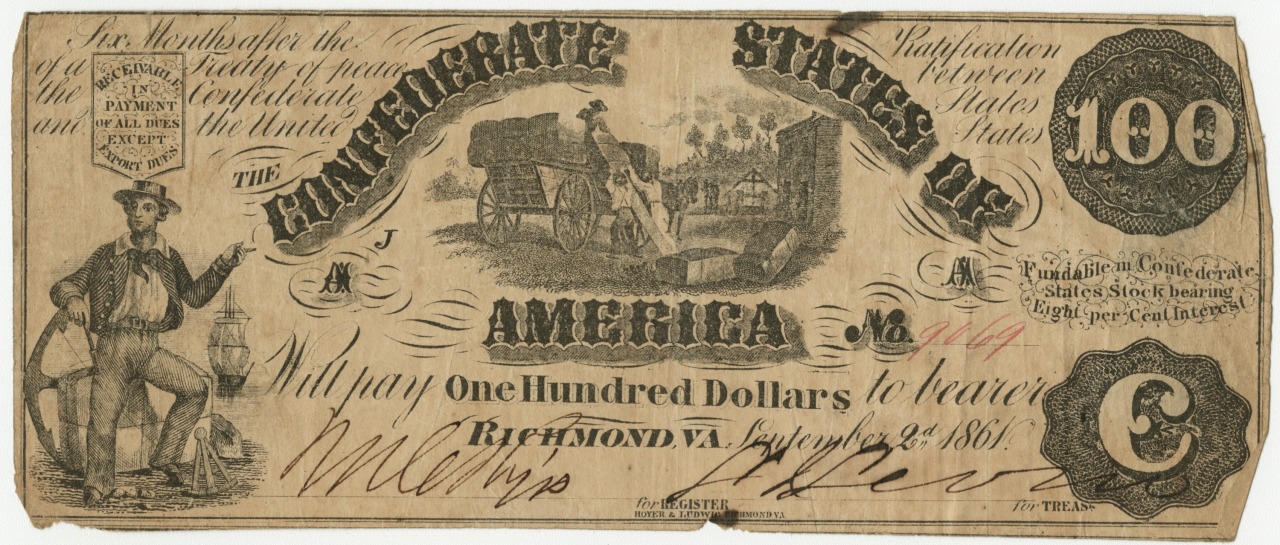
Confederate States of America one-hundred-dollar note
September 2, 1861; lithographic engraving
by Hoyer and Ludwig, printer (Richmond, VA)
The Historic New Orleans Collection, 1979.24.8

Cancelled Confederate States of America ten-dollar note with double hammer cut marks
September 2, 1861; engraving
by Southern Bank Note Company, printer (New Orleans)
The Historic New Orleans Collection, 1989.95.33
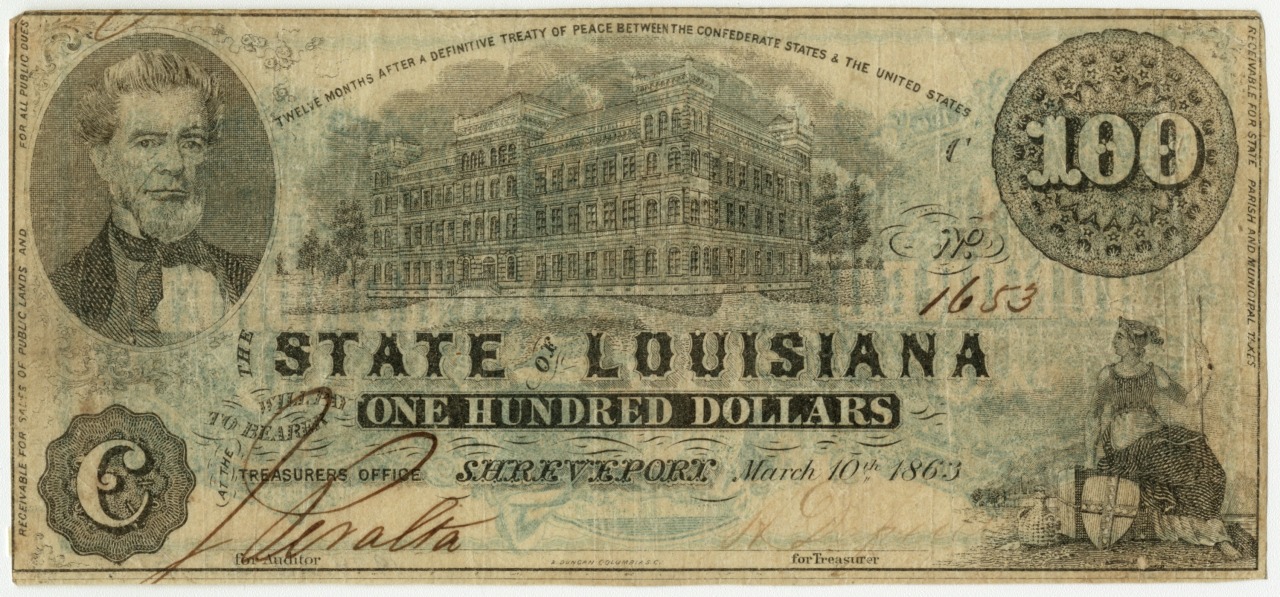
State of Louisiana one-hundred-dollar note
March 10, 1863; lithographic engraving
by B. Duncan, printer (Columbia, SC)
The Historic New Orleans Collection, 1974.25.22.51
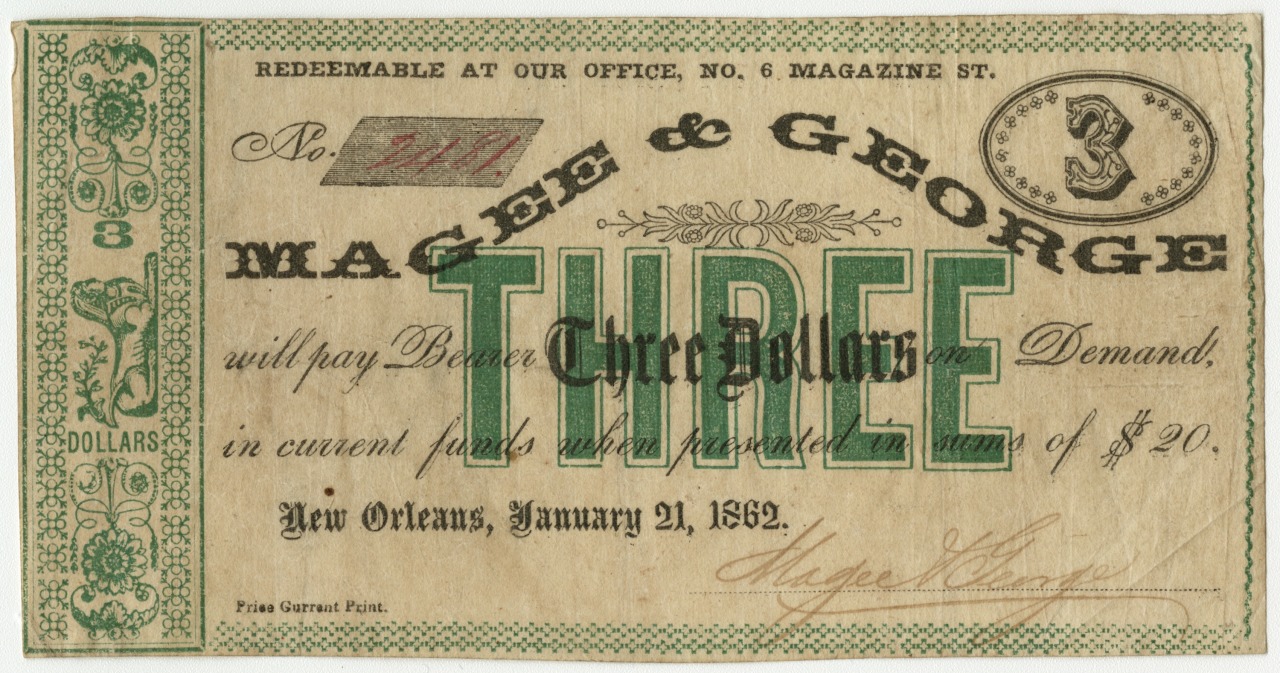
Magee and George (saddlers) three-dollar note
January 21, 1862; engraving
by Price Current Office, printer (New Orleans)
The Historic New Orleans Collection, 1970.19.4
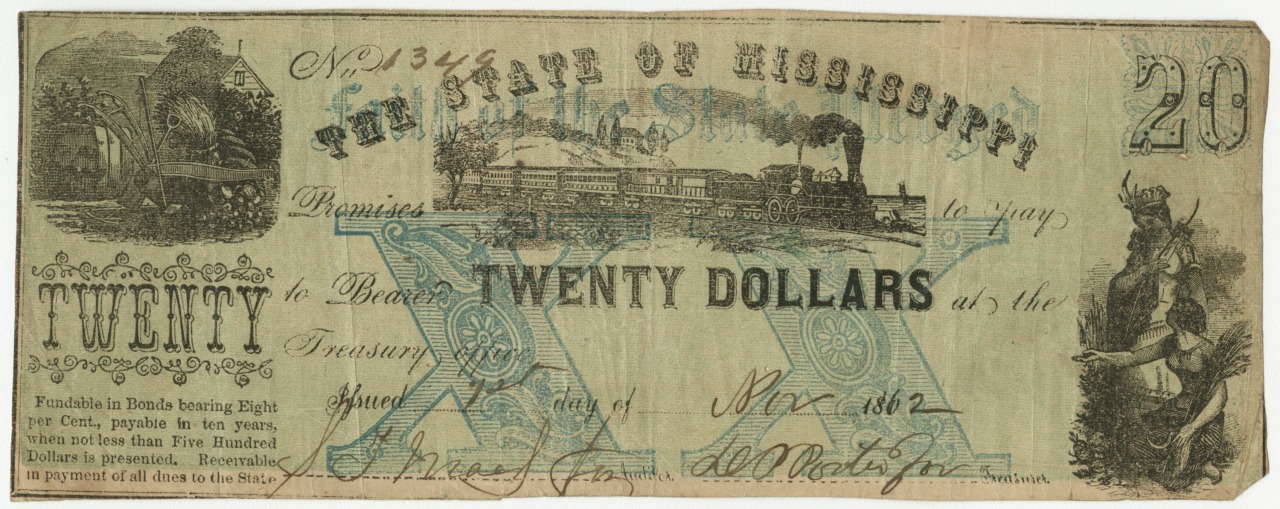
State of Mississippi twenty-dollar note
November 1, 1862; engraving
The Historic New Orleans Collection, gift of Mrs. Daniel Whitney, 1991.2.3
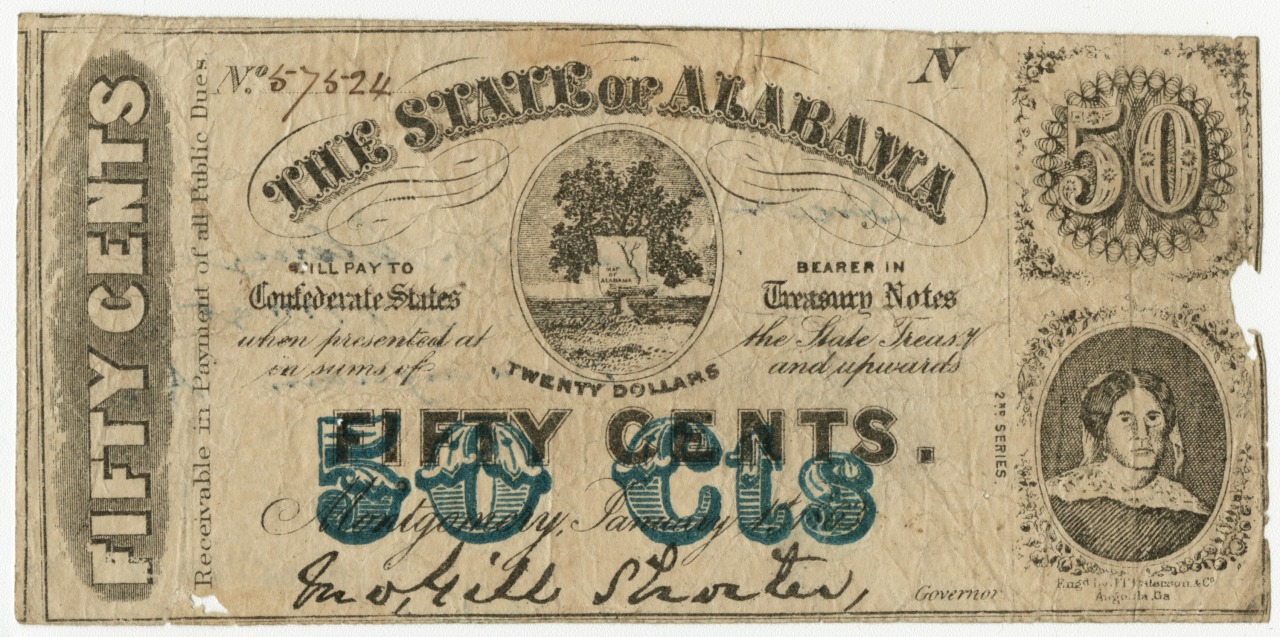
State of Alabama fifty-cent note
January 1, 1863; engraving
by J. T. Paterson and Company, printer (Augusta, GA)
The Historic New Orleans Collection, 1974.25.22.48
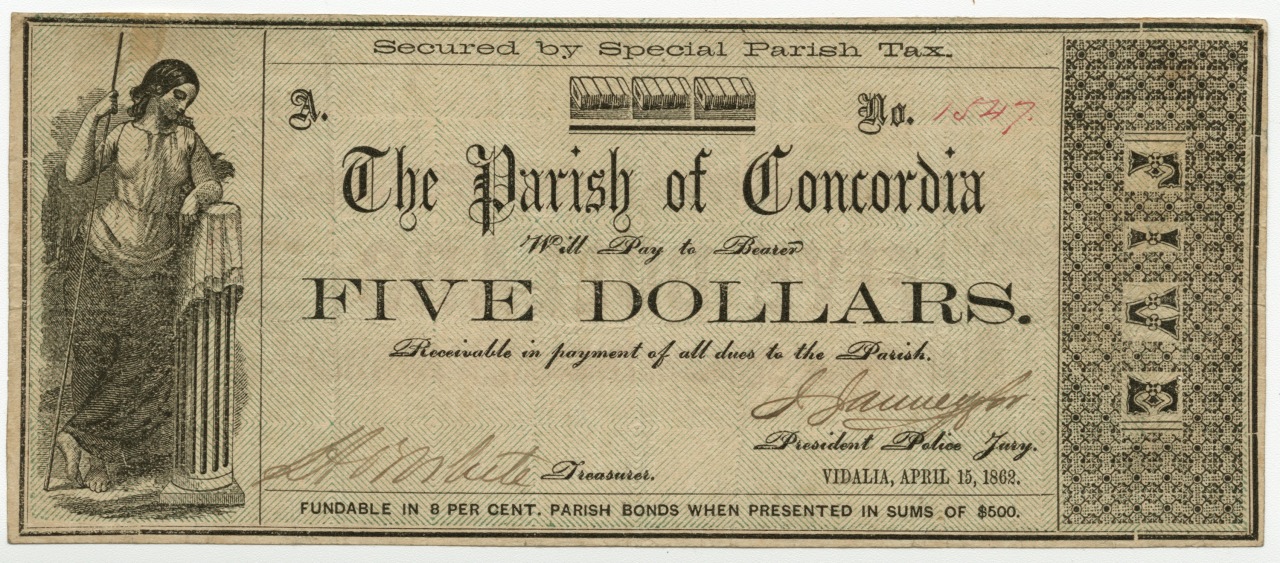
Concordia Parish five-dollar note
April 15, 1862; lithographic engraving
The Historic New Orleans Collection, 1970.19.54
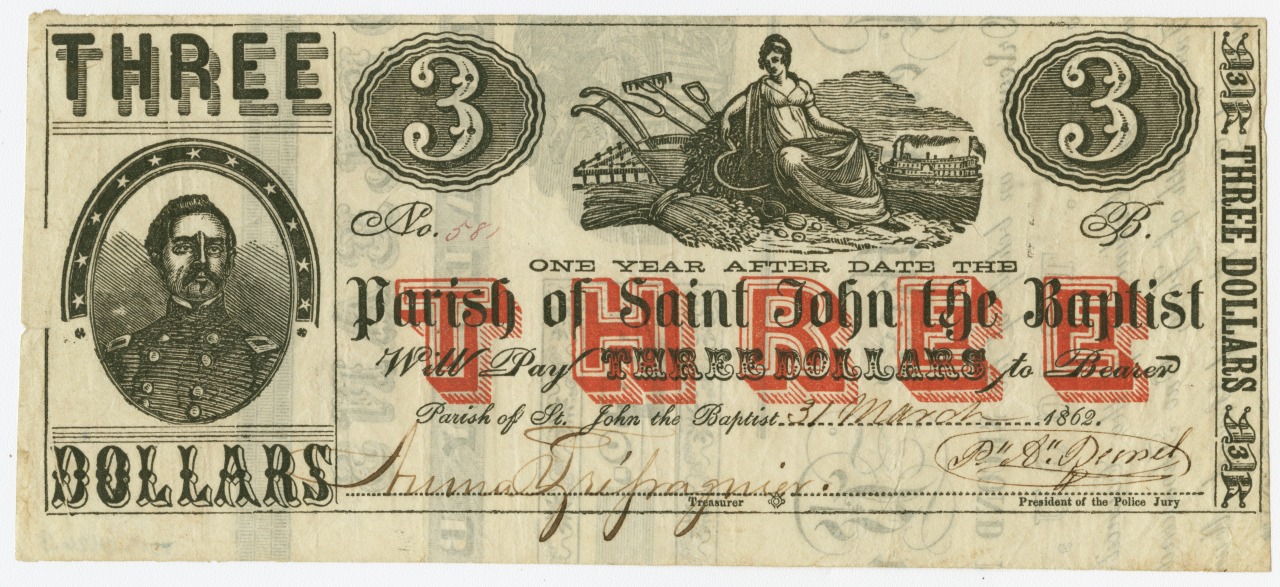
St. John the Baptist Parish three-dollar note
March 31, 1862; engraving
The Historic New Orleans Collection, 2015.0426.3

St. Tammany Parish five-dollar note
January 1, 1862; engraving
by Pessou and Simon, printer (New Orleans)
The Historic New Orleans Collection, 1970.19.27
